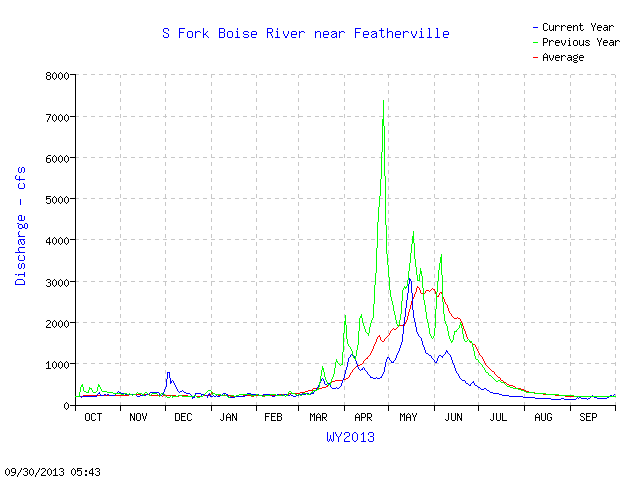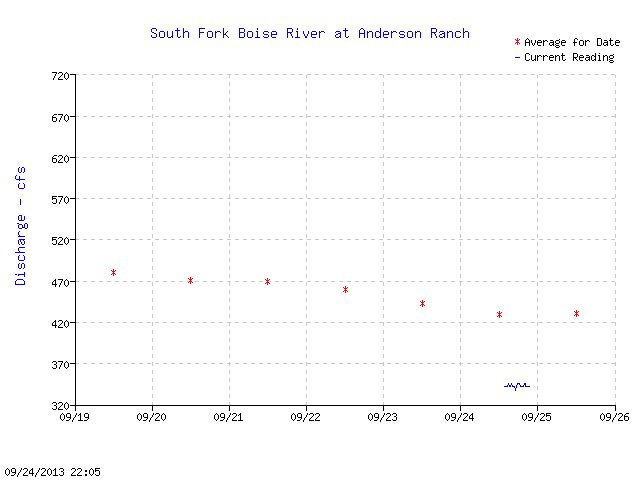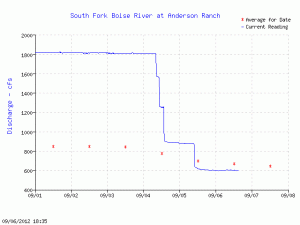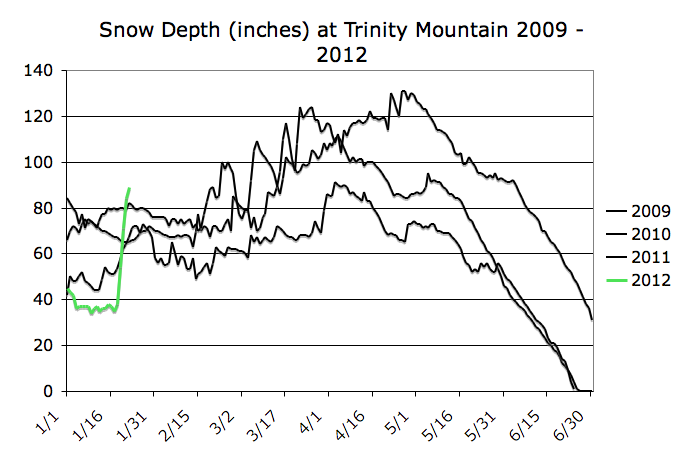We grabbed a few charts at the end of Water Year 2013 to put some perspective on the water situation.
Flows from Anderson Ranch Dam:
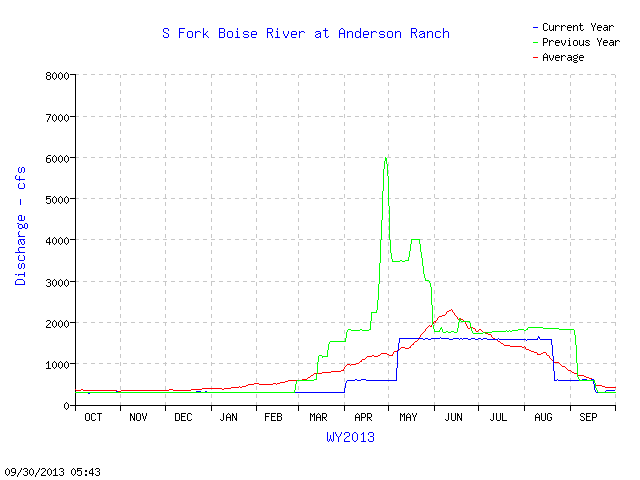
Flow From Anderson Ranch Dam where blue line = 2013, green line = 2012, red line = long-term average
The summertime flows were 1,600 cfs instead of 1,800 cfs in 2012. The 1,600 cfs flows extended well into August to provide irrigation water to users in the Treasure Valley. The rest of the system was draining so more water was moved from Anderson Ranch pool. And you can see what happened in the reservoir here:
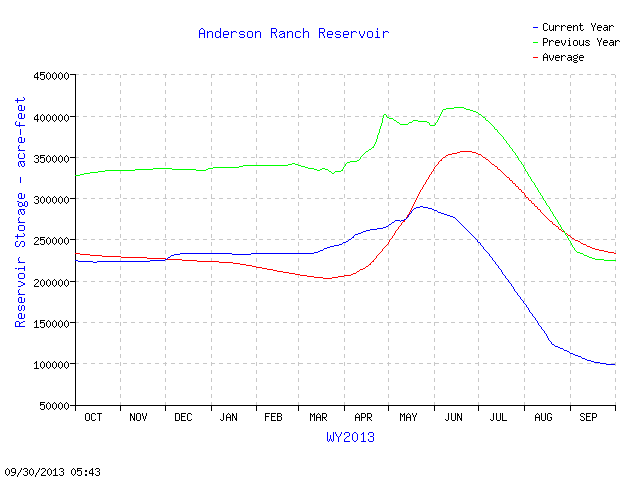
Water stored in Anderson Ranch Dam blue line is 2013 and green line 2012 and long term average is the red line
Anderson Ranch reservoir started the water year (October 2012) very near the average for water in the pool. The low snowpack in the winter meant less runoff into the pool in the spring and early summer. The peak amount of water in May was nowhere near the average, let alone filling Anderson Ranch. The the 1,600 cfs flows pulled the contents to an amount well below average and at a high rate until mid August. The water year ends with 100,000 acre feet in the pool.
The reservoir drained very quickly because it was a year where much less water flowed into Anderson Ranch Reservoir as seen in the chart for the water gage at Featherville:
So the blue line in the chart above shows just how below average the flows were upstream of Anderson Ranch pool. By the way, the spike in river flows in late April 2012 on the green line is a same time when a record flow was observed in the Middle Fork Boise River at Twin Springs gage. Some readers may recall the late April heavy rains that melted much of the lower to mid elevation snow into the South Fork Boise River.
One indication of the water year ending in a whimper is what happened with the flow gage on the South Fork Boise a mile or so downstream of Anderson Ranch Dam:
The slides on September 12, 2013 knocked out the water gages for a few days. They are back running now, but the chart above from September 24 shows only a brief period when it was working that day and no data was charted for previous days. This situation is understandable given that much debris tumbled into the South Fork and it may have directly affected the functioning of the gage or perhaps changed the profile of the channel in the area of the gage making a clean reading of water flows a challenge and thus a need to recalibrate the equipment. The automated system for this gage is working as shown on the USGS gage here.
Looking forward, there have been some inquiries and informal discussion whether it would be possible to shape flows from Anderson Ranch Dam in 2014 to deal with the debris and sediment in the South Fork Boise River to help transport the sediment and allow the river to carve a channel through the massive deposits in the river. For any of this to happen it will require water in Anderson Ranch pool that is not yet there. A winter with above average snow could be very important to developing some alternatives to shape the flow releases, their timing and magnitude, and it will have to happen without adverse effects on downstream water users. But readers may be interested in knowing it is a topic of conversation, or at least was prior to the government shutdown.
